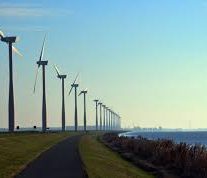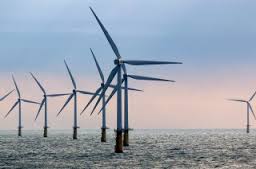
The Netherlands energy transition
Energy 13 March 2017In line with international developments, the Netherlands faces the challenge of drastically reducing global emissions of greenhouse gases. In the international climate change agreement, the world has agreed to achieve a global balance between greenhouse gas emissions and capture and storage (i.e. climate neutrality) by the second half of the 21st century. The Netherlands’ energy supply is strongly linked to the energy markets in Europe and the rest of the world. The Netherlands wants to see a reduction of greenhouse gases at the European level of 80-95% by 2050, and to this end it is committed to the European agreements, such as the Emissions Trading System (ETS). This is required in order to make far-reaching reductions in CO2 as effectively and efficiently as possible.
Alongside the ETS, which is designed to reduce industrial and commercial greenhouse gas emissions, in 2016 Europe will also set down binding agreements for the Member States to realise the reduction targets for sectors not covered by the ETS, such as the built environment. In keeping with the European decision making, the government set down agreements on how the targets set for 2050 can be met in the Netherlands.
Based on the currently available knowledge, practically all low-CO2 energy sources and technologies will need to be deployed in order to achieve the desired CO2 reductions. Energy conservation, biomass, clean electricity production and the capture and storage
of CO2 (CCS) are likely to be robust elements in the energy mix on the road to 2050.
The extent of deployment will depend on the energy demand, the availability of the various energy solutions (some still under development) and how affrontable they are.
Netherlands are currently dependent on fossil fuels for almost 95% of our energy supply. During the coming decades, fossil fuels will continue to play a role in the energy system, but they will decrease in importance. The electricity market is transitioning towards renewable energy sources. In eight years’ time, off shore windfarms will generate enough electricity for five millions households. There will be no place for new coal- red power plants in this transition and it is important for the electricity market to intensify the focus on the least polluting technologies. An effective price incentive provided through the ETS will ensure that the operators of coal- red power plants take measures to reduce their emissions, for example by implementing CSS or shutting their plants down.
The energy transition offers opportunities for the maintenance and development of the Netherlands’ earning potential. Dutch offshore businesses are already involved in the construction of offshore windfarms at the global level. The Government wants the Netherlands to make the most of these opportunities by developing and implementing innovative solutions, which would also enable the Dutch business community to contribute to the global energy transition.
The worldwide transition to low-CO2 energy sources, production processes, products and services will change the Netherlands’ economic structure. Innovative solutions will be required in many sectors, involving both existing and new businesses, if the transition is to succeed. The greatest challenge for existing businesses is to respond to the transition through innovation and where necessary by adapting their earning models. CO2-intensive businesses who fail to make the transition will eventually find that there is no longer a place for them in the low-CO2 economy.
The Netherlands has a strong and extensive industrial sector. The main consumers of energy are the refineries and the chemicals, metallurgical and paper industries. The current state-of-the-art does not allow for large-scale energy conservation in these sectors. Often, a complete overhaul of technological processes is required, which takes a lot of time. Technological breakthroughs will likely only be applied in a later phase on the road to 2050. The first challenge is to organise processes so that less heat or lower-temperature heat is required. Other options include electrification, more e client use of stream production and the use of residual heat in industrial clusters. However, fossil fuels will still be required for the production of some high-temperature heat for the foreseeable future. In time this will be combined with CCS.
The transition to a renewable energy supply will transform the appearance of housing developments, business parks and rural landscapes. This applies both to large-scale production (such as windfarms), energy transport through high-voltage powerlines, underground storage of CO2 (CCS) and small-scale initiatives, such as solar panels. For the energy transition to succeed, the public, businesses and NGOs must be constructively involved at an early stage in the discussion on the spatial accommodation of the energy infrastructure.
The transition to a low-CO2 energy supply that is safe, reliable and affordable is a challenge for the Netherlands, Europe and the rest of the world.

offshorewind.biz


